Hezbollah and the Lebanese State.
- Reconciling a National Strategy with a Regional Role
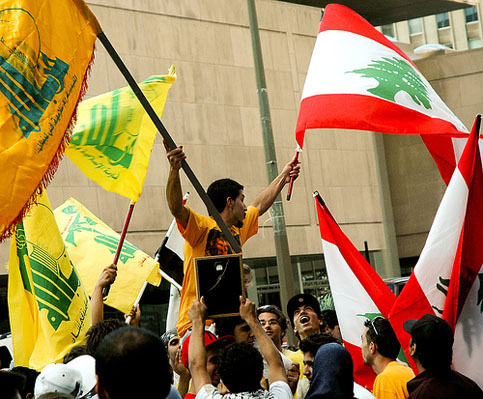
Ali Fayyad, Director of the Studies and Documentation Center, Lebanon. August 2006
After the withdrawal of Syrian troops from Lebanon in April 2006, Hezbollah felt compelled to join the government to ensure a balance between the various Lebanese forces and protect Lebanon’s vulnerable position in the regional equation. This paper by the head of Hezbollah’s main think tank, asserts that the movement is determined to abide by Lebanon’s democratic political system based on the rule of consensus, and to support a strong central state, a transformation in the movement’s understanding of the requirements of the Lebanese domestic balance and its appreciation that internal stability is central to its national project if it is to succeed in its pan-Arab and Islamic mission.
While the national dialogue started in spring between all Lebanese factions was making progress on issues of power sharing, divergent views about foreign policy, first and foremost about the strategy towards Israel and about regional alliances constituted a major fault-line. On the eve of the war with Israel, Hezbollah was arguing that the issue of its armaments should be discussed within a broader debate on a national defence strategy that addresses reciprocal guarantees between Lebanese groups, and reconciles the resistance’s defensive function with the State’s strategy of regaining its sovereignty, away from external influences. In a vision of “inter-related balances” to which the leader of the movement sheikh Hasan Nasrallah is committed, Hezbollah’s contribution to the regional equation is an automatic result of its achievements in the domestic national arena. The Lebanese national interest is therefore the main criterion that determines the movement’s behaviour, and the contradiction between its domestic and regional roles no longer exists. In the aftermath of the war with Israel, Hezbollah’s regional popularity has grown beyond any expectations but the movement is reasserting its attachment to its Lebanese national agenda.
The participation of Hezbollah in the Lebanese Government following the withdrawal of the Syrian troops from Lebanon marked a qualitative development in the party’s political trajectory. Despite earlier opportunities and its undoubted influence on power and on the political balance in Lebanon, Hezbollah had abstained many times from participating in government, because it had always viewed political authority with some reservations. Since May 2000, when Israel withdrew from Southern Lebanon because of the actions of the resistance, it has been impossible to constitute a Lebanese government that does not reflect the impact of the war, nor to define its political orientations, especially in relation to the country’s foreign policy and strategic choices pertaining to the conflict with Israel. The resistance movement acquired a moral weight that was reflected in the form of a parallel authority that fulfils a normative function. The participation of Hezbollah in the Government was not in effect a transformation or a sudden change but rather an evolution; and its influence on the structure and orientations of political authority in Lebanon was not tied to its entry into Government.
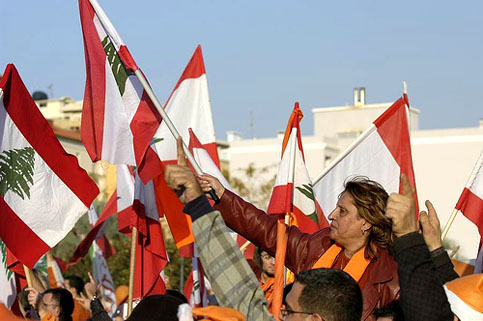
Towards Participation in Government
The relationship of Hezbollah to political authority, although special, raises the problematic relationship between a religious movement and non-religious political authority and indicates the necessary changes that the Islamic movement needed to undergo to adapt to its political and social environments.
Prior to its participation in Government, Hezbollah could be described as an authority without authority. It was able to play a decisive role in the area of conflict with Israel and other strategic choices but, in fields related to the administration, institutions and civil functions of Government, Hezbollah had no noticeable role or influence.
During two decades of resistance, Hezbollah approached political authority with militant puritanism, which not only excluded seeking power but also led it to consider access to power as contradicting the rationale and requirements of the resistance. What compelled Hezbollah to take the dramatic step of joining the government was the profound transformations in the Lebanese political balance after the withdrawal of the Syrian troops. Syria’s withdrawal left a strategic void in the State’s administration, altering the relative size of the various forces, revealing some of the key choices in State policies and exposing Lebanon’s vulnerable position in the regional equation. As regional factors lost some of their weight in the political equation, the domestic forces and trends expanded to fill the political space, according to their size, and to reposition themselves in a new political constellation.
In Hezbollah’s view, it was no longer possible to pursue the resistance project and correct the State-building process from outside the structure of power. These goals constituted two major reasons for entering the government. Neither was it possible for the government to enjoy the credibility of wide popular support with Hezbollah outside. This would have left a significant constituency – if not the largest – outside state institutions, with the likely disturbances and instability that this could cause in the Power structure and in its ability to govern.
Lebanon is currently facing a serious political crisis. Although the current government includes all major trends and forces in the country – with the exception of the Free Patriotic Movement chaired by General Michel Aoun and some other pro-Syrian political parties – there are nonetheless deep divisions within it which have affected its ability to govern. In an effort to overcome these divisions, a framework for national dialogue was established on the margins to deal with the major issues around which the Lebanese disagree. This dialogue became, de facto, the highest centre of power in the country.
Lebanese politics is divided along two main lines, each reflecting a different rationale. First is the so called March 14 coalition (which later became known as the February 14 block following the withdrawal of Michel Aoun from it). This coalition holds Syria responsible for the assassination of Prime Minister Rafik Hariri, calls for freedom and independence, and bases its positions on the international resolutions concerning Lebanon, and especially Resolution 1559 that calls for the disarmament of the Lebanese and non-Lebanese militias. This coalition also calls for the dismissal of President Emile Lahoud, the drawing of borders with Syria, including the occupied Shebaa farms, the disarming of the resistance (Hezbollah) and of the Palestinian organizations based in Lebanon. Second is the March 8 coalition whose political stance and demands are based on an integrated vision of nationalist and pan-Arab concerns. In addition to requesting the building of institutions based on balance and participation, it gives priority to preserving the position of Lebanon in the equation of the conflict with Israel; hence its support for maintaining the weapons of the resistance to liberate those parts of Lebanon still under occupation (Shebaa and Kfarshuba), achieving the release of Lebanese detainees in Israeli prisons, and confronting the threats from Israel. The coalition sees that any decision about the weapons of the resistance should be based on a national defence strategy agreed by all Lebanese. It also sees no reason for changing the President of the Republic as long as there is no agreement on a political project for the country and on the name of the substitute President who would be able to execute this project. As for the Palestinian weapons, the coalition considers that the issue should be decided in the framework of Lebanon’s national interests and the requirements of the conflict with Israel, and should be based on a dialogue with the Palestinians while providing them with all their civil rights in Lebanon to allow them to live in dignity. The March 8 coalition insists on maintaining special relations with Syria and does not object to drawing the borders with it, except for the Shebaa farms as long as this territory is under Israeli occupation; nor does it object to opening diplomatic representations between Lebanon and Syria once mutual trust and normal relations between the two countries are established.
The difference between the two coalitions also extends to regional and international alliances. While the February 14 block is characterized by good relations with the American -Western axis, the March 8 block gives priority to relations with the Syrian-Iranian axis and insists on the need to involve the Arabs in resolving the Lebanese political crisis. It is therefore clear that the central division between the two groups is about foreign policy, first and foremost about the strategy towards Israel as well as alignments and alliances within the regional environment. This main cleavage naturally influences positions over internal and domestic issues, but these divisions remain less serious than those over external issues.
Within this complex and divided political map, the Hezbollah constitutes the heart of the March 8 coalition and is treated by local and international forces as its focal point. Hezbollah’s ideas and behaviour in relation to the crisis over the past year, as well as its vision of power constitute an important example of an Islamic movement that practices both political action in a plural environment and armed militancy against occupation. Let us start with Hezbollah’s electoral policy during the parliamentary elections held immediately after the Syrian withdrawal, when the movement was able to break the prevailing political alignments on several key and interconnected issues: the position vis-à-vis Syria, the accusation against Syria for its alleged involvement in the assassination of Prime Minister Hariri, the suggested establishment of an international criminal court for Lebanon and the position vis-à-vis UN Security Council Resolution 1559.
The new electoral understanding was called the ‘quartet understanding’, comprising the Hezbollah and the Amal Movements on one hand, the Movement of the Future led by Saadeddine Hariri and the Progressive Socialist Party led by Walid Joumblat on the other. It was a very unusual alignment compared to the positioning of the various political forces in the context of the withdrawal of the Syrian troops, yet it paved the way for the formation of the current government with its various components. The compromise that led to the ‘quartet understanding’, and ultimately the constitution of the Government, was based on the preservation of national unity, the rebuilding of the State and the protection of the resistance. The potentially divisive elements within UN resolution 1559 were left to the national internal dialogue to address.
This settlement survived deep internal contradictions for almost seven months before it ran into serious trouble following the violent exchange of accusations in the media and divergences in positions on the weapons of the resistance, the Syrian-Lebanese relationship and the fate of the Presidency. These new tensions hindered the Government’s performance and stability but did not lead to its breakdown. Instead, the aforementioned national dialogue was created.
Hezbollah’s attitude towards its political adversaries was reflected once again in the political understanding reached with the Free Patriotic Movement headed by General Aoun. A memorandum of understanding was drafted. It reflected the movement’s attachment to dialogue, its willingness to conclude pragmatic settlements on the basis of political balances, and its concern for political stability. The document constituted a qualitative change in the nature of the existing political coalitions: the two parties represent arguably the two most popular movements in Lebanon, from the Muslim community and from the Christian community respectively, with very different political backgrounds and histories. They succeeded nevertheless in reaching a joint political understanding based on mutual concessions and built consensual approaches to thorny political issues. The memorandum takes a comprehensive view and covers a broad set of issues but its most important pillar is the Free Patriotic Movement’s agreement that the resistance should retain its weapons until liberation is completed and the Lebanese detainees in Israeli prisons are free. For its part, the Hezbollah agreed to exchange embassies with Syria and to draw the borders provided confidence-building measures are also taken.
The memorandum of understanding created a new political and social atmosphere in the country. It re-shuffled the internal game and shifted political divisions away from the traditionally vertical (inter-sectarian) lines towards a horizontal (intra-sectarian) direction. While the Shia community was united, the agreement revealed deep rifts within the Maronite community. Most importantly, the agreement seems to have ended the old Muslim-Christian cleavage in Lebanon, which has been shown to be the most threatening for stability and civil peace.
Another key feature of Hezbollah’s behaviour and political thinking as reflected by the memorandum is its assertion of the consensual nature of the Lebanese political system. The consensus rule became Hezbollah’s motto, especially since the government crisis erupted following a majority vote on a number of key issues and in face of what the party saw as an attempt by the majority side to monopolize the decision-making process. Hezbollah’s insistence that Lebanon’s political system is a democratic consensual one based on the rule of ‘con-sociationism’ as stipulated by the Preamble of the Lebanese Constitution cannot be understood merely as a political response to a particular moment of deep divisions. It reflects a deep transformation in Hezbollah’s understanding of the requirements of the Lebanese political system as well as its appreciation that internal stability is central to every national project if it is to succeed in its pan-Arab and Islamic dimensions. Hezbollah’s adherence to the consensus-building principle departs from the traditional revolutionary logic that sees in conflict a way to achieve progress, and promotes the idea of complementarity as a way forward. While it acknowledges that politics is an ongoing process of conflict and complementarity, it sees that the majority rule creates an unstable balance of power and is inadequate in the long run to protect the interests of all. The movement seeks therefore to invest its strength and capacities to promote balance rather than to achieve domination in the Lebanese structure.
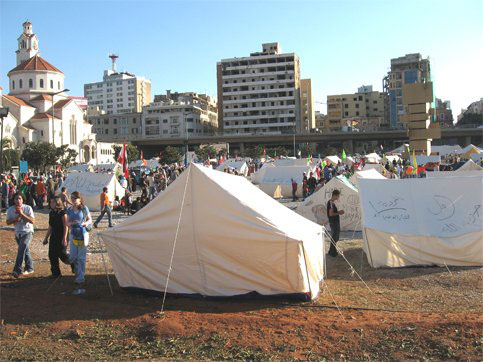
Behind the positions: visions and ideas
Hezbollah’s response to the political crisis and its decision to participate in the Government reflect the complex interaction between its original intellectual structure as a revolutionary movement and its subsequent transformation imposed on it by the complexities and challenges of reality. The movement is currently facing a number of challenges and a lively debate that have become more visible as the Lebanese divisions have increased. Diverse sensitivities and histories of the political coalitions exacerbate these differences. Some are seen as lying at the core of the political debate, others as reflecting underlying theoretical, intellectual and political differences of view over issues such as the relationship between the nature of a resistance movement and the functioning of a State with its institutions and its logic. The other problematic issue concerns the religious political parties in terms of their capacity to reconcile their national, i.e. Lebanese identity with their pan-Islamic identity, and the obligations that this imposes – by virtue of belonging to both a nation and a religion – vis-à-vis the nation and the wider context, in particular the Palestinian cause, the conflict with Israel and the role of the US in the Arab and Islamic world.
These and many other problematic issues are linked to each other, and require comprehensive and coherent answers at the theoretical level to explain the relationship between a religiously ideological party and a plural socio-political environment. Even if the Hezbollah has attempted to resolve this relationship through praxis, it is still important to formulate it theoretically at the level of its political thinking. By capturing the concepts and positions with which Hezbollah approaches the Lebanese reality and organizing them into a coherent theoretical framework, we will be able to understand the foundations of Hezbollah’s political thinking and compare it with that of other contemporary Islamic movements and how they relate to internal and external challenges. This system of thought can be described as a new Arab political rationalism. By this we mean a new rationale that combines methodology and goals in a new framework for the formulation of ideas and programs. This political rationalism situates itself between the “political agenda” and the “political mind”. Political agendas are most often fluid, versatile and contingent, while the political mind is more stable and durable, because it is grounded in history and is often constituted through complex processes arising from different epochs. While rooted in tradition, it continues to evolve in response to the present reality. Therefore, the “rupture” or the transformation in the “political mind” – that some Arab thinkers call for to rid it of the burden of tradition is a thorny issue that may not be as easily feasible as some suggest.
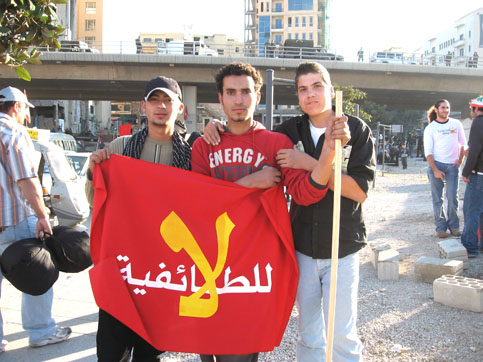
What is the new political rationalism?
The “political rationalism” we call for is a reference framework for thinking that is based on purely strategic choices and can be translated into a set of thoughts, convictions and positions. It is based on two pillars: internal stability and societal development. Stability is a basic condition for a sound and capable society. Internal conflicts often impede the growth and development capacities when they encroach on the space of civil peace and challenge the bounds that are set in institutions and laws. Stability is also a necessary condition for a society to face external challenges. Therefore, stability is necessary for internal development and for facing external challenges. The democratic peaceful struggle is the natural mechanism for regulating differences and divisions between the government and the opposition and between the different political or confessional groups, in order to reach stability.
As for societal development, it requires a set of political, economic and social conditions, first among those is a consensus between the authorities and society because society, in all cases, must be allowed to make full use of its potential. An oppressed society either withdraws from public affairs leaving those to government in the case of indifference, or heads towards explosion. This suggests the need to distinguish between the problematic issues raised by societal development in Lebanon, a country that enjoys its own special democracy, and the problematic issues raised in other Arab arenas which are usually non-democratic.
In Lebanon, sectarianism overrides the debate over democracy and is eating up the benefits of democracy. Examining societal development raises the problematic relationship between the State and society and, within it, the problematic relationship between the State and the Resistance. The participation of Hezbollah in the government and in the administration of public affairs reflects a reconsideration of its political thinking regarding the State; namely that it is no longer possible to ensure stability and protect society with a weak State, exhausted institutions and inconsistent political choices. But while Hezbollah’s participation in government is a mark of its reconciliation with the State, it does not necessarily signify reconciliation with the current political authority. This can occur only after a process leading to the rebuilding of the State as a state for all its citizens, a State which reflects the convictions of all the Lebanese and is an open space for promoting their different ambitions and beliefs.
Hezbollah tends to define the State as a concretization of public will. This definition transcends the structural aspects of the State, and stresses the importance of the society itself in State building. The State is more than a bureaucratic body, it is about functions, and society must help the State accomplish its functions. The State is, at the same time, a land, a people and a set of institutions. The society is part of the State and it has to support it until it is able to carry out those functions independently. It is clear that this societal approach is different from the one that considers the State a superior and isolated body. In its true image, the State is only a result of the development of society itself. Both society and the State must be integrated in one equation. Therefore, it is not possible to concentrate on protecting the State when society is exposed. This approach can help shift the debate on the state-resistance issue to where it should be, that is, where the theoretical meets the political.
The Lebanese did well when they invited each other to a dialogue as a framework for dealing with their divisions. Consensus is essential to end the illusion that political stability or societal development can be achieved through the rule of predominance. While some Lebanese remain attached to the weapons of the resistance, others have reservations, for various reasons, and propose different formulas and time frames for disarming the resistance. On this issue, retaining the status quo carries the risks of division, while consensus means the search for settlements that will bring the debate from an examination of the fate of weapons to a discussions about common concerns and reciprocal guarantees: how do the various Lebanese groups define reciprocal guarantees towards each other so that the resistance strategy can be reconciled with the State’s strategy? And how do they address their concerns in order for the weapons to keep their defensive functions for Lebanon as a whole and not threaten the internal balances or depend on sectarian priorities at the expense of the Lebanese national priorities? How can national security be preserved to prevent the Lebanese from being exposed to the Israeli exploitation that has lasted decades? How can the meaning of sovereignty be extended to include liberation from occupation and freedom from the influence of external equations or international hegemony? In reality, the national dialogue or bilateral dialogues have not gone far enough to find answers to these questions, but these are being tackled.
The Secretary General of Hezbollah Sheikh Hasan Nasrallah has indicated on many occasions, including in the national dialogue sessions, that the resistance movement will not be using any weapons outside the scope of the liberation of the occupied Lebanese territories and the defense of Lebanon against the Israeli challenges and aggressions. Hezbollah does not hide its inclination to Islamic and Arab causes, neither does it hide its regional alliances. At the heart of its ethos lies the struggle against Israel in which the Palestinian cause is the main issue. Therefore, for over two decades its political discourse has contained positions related to the Palestinian cause. But its positions and discourse reflect a constant effort aimed at reconciling its political ideology, based on the concept of one Umma (one Islamic nation) with common concerns, interests and fate on one hand, and on the other hand, its agenda as a Lebanese national liberation movement and a key component of the political power system in Lebanon, with all the complexities and the national specificities that come with this role.
There can be two alternative visions in defining the practical relationship between Hezbollah’s domestic and regional roles, or more precisely, between its Lebanese function of resistance and its regional function.
1- The vision of inter-related roles which calls for a regional mission for the resistance to play a direct supportive role in any dramatic development that might be caused by an aggression on any of the resistance forces (e.g. Hamas).
2- The vision of inter-related balances which sees that the success of the resistance movement in its domestic role – and the principle applies to any other regional movement that succeeds within its national framework – constitutes in itself a contribution to the overall objectives of the resistance because the regional balances are all inter-related.
Within this latter vision, the supposed contradiction between the domestic and regional roles of the resistance movement that usually raises many sensitivities and complexities, no longer exists. The contribution to the consolidation of the regional equation from this angle becomes an automatic result of the achievements of the resistance movement in its domestic national role. This means that the Lebanese national interests are the essential criterion for the behavior of the resistance movement. Its contribution to the regional struggle – and not the pursuit of any hidden agenda- thus becomes an automatic result of its successes at the national level. Sheikh Hasan Nasrallah’s position includes very clearly a commitment to the second vision, namely that the practical behaviour of the resistance movement comes within the rationale of inter-related balances and not that of inter-related roles.
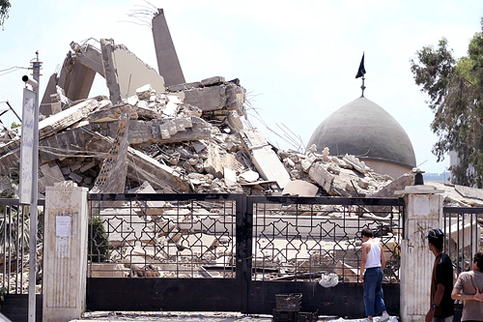
In the Aftermath of the Israeli War
It would be naïve to believe that Israel’s offensive on 12 July 2006 was motivated by Hezbollah’s kidnapping of two of its soldiers. In a nutshell, the advent of a new Middle East as spelled out by the United States is a strategic objective that requires first a radical change of the Lebanese political equation and might end with a military attack against Iran. The strikes against Hezbollah and attempts to dismantle it using the same methods of destruction and terrorizing that the US tried in Iraq, was based on the assumption that the attack would trigger a series of desired consequences in a domino-like process. The total failure of this strategy in Iraq is flagrant, and the same failure has just been experienced again in Lebanon.
From Hezbollah’s perspective, the kidnapping of the two Israeli soldiers had a limited objective: it sought to engage in a process of exchange of the two soldiers against Lebanese prisoners held in Israeli jails. There was no intention to escalate or expand the confrontation.
The confrontation is already yielding far-reaching consequences. Hezbollah’s influence has grown to become a symbol of resistance and awakening in the Arab and Islamic worlds. While there was little ambiguity in Arab governments’ positions throughout the crisis and a deepening rift between regimes and public opinion, resistance as an alternative option to negotiations or stagnation, has gained credibility because it now rests on a concrete experience.
The post-July 12 context is radically different from the previous situation. Hezbollah is clearly facing new challenges at different levels as a result of its victory over Israel: the Lebanese domestic situation which has grown more complex and is now constrained by an international consensus embodied in UN resolution 1701; and the Arab regional scene where Hezbollah finds itself in a de facto leadership role for Arab public opinions from different intellectual and political backgrounds. These developments however have not changed Hezbollah’s agenda which remains a specifically Lebanese agenda whether for resistance or for reform purposes.


